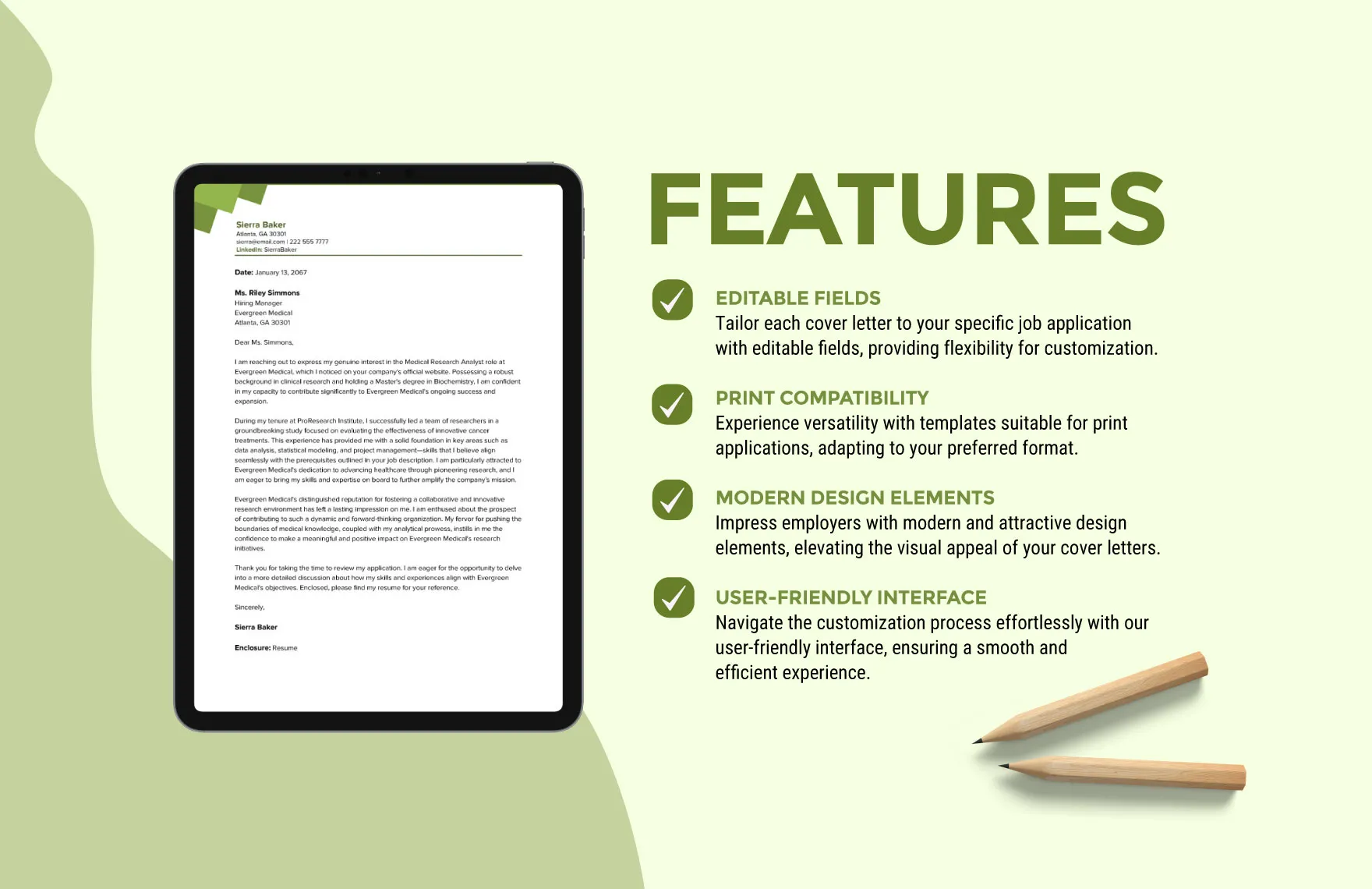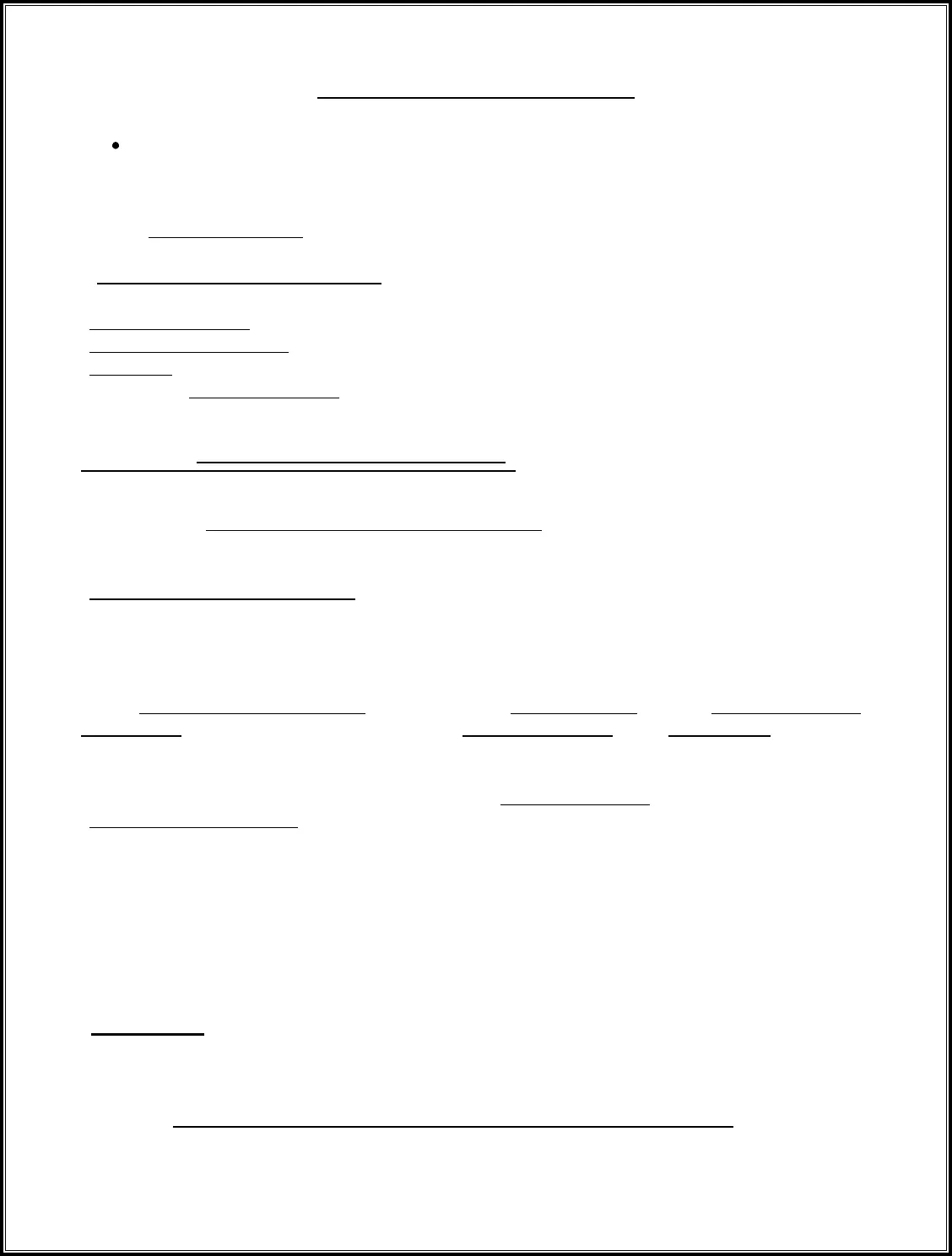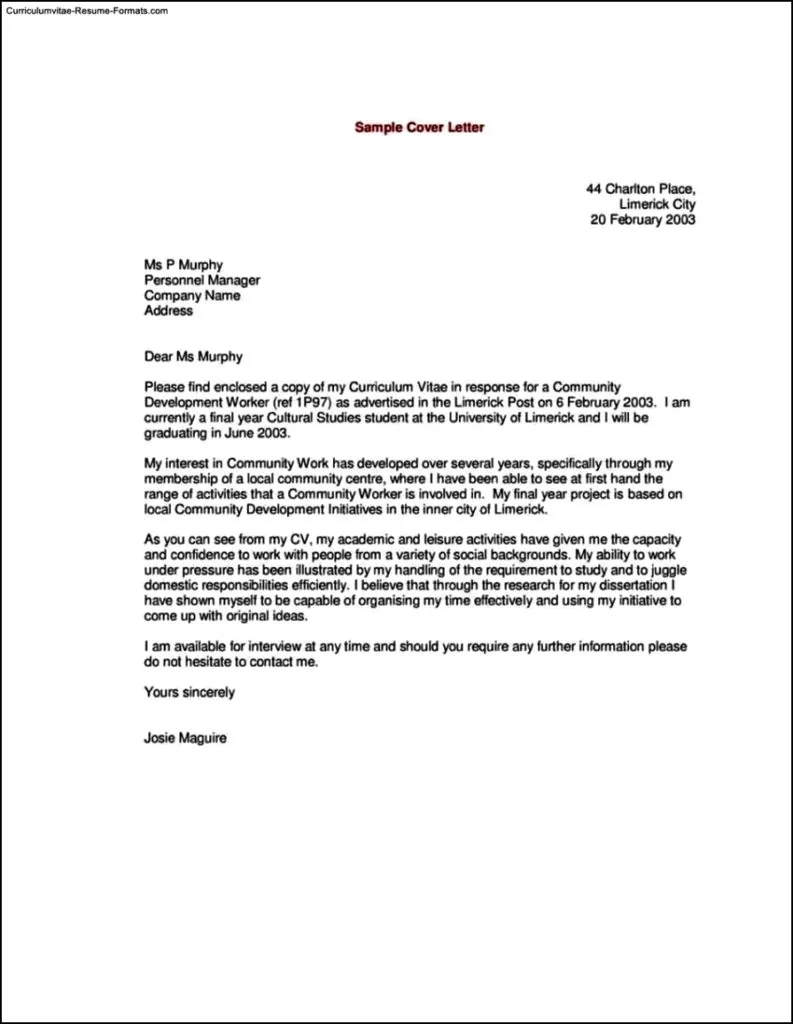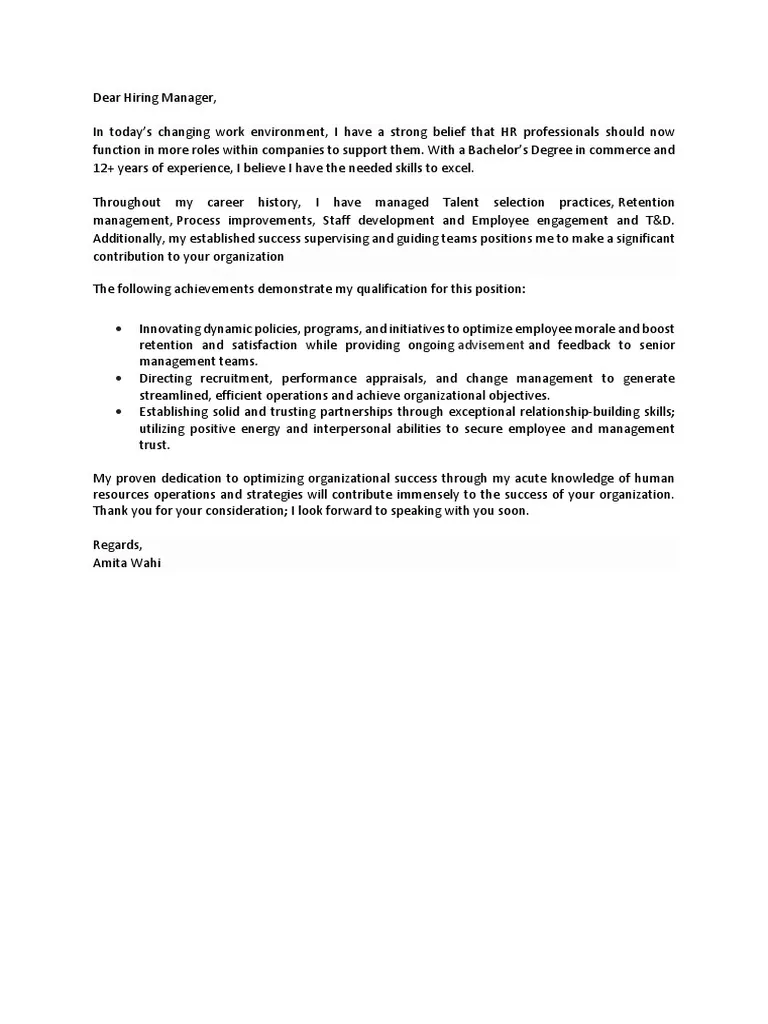What is a Resume Cover Letter (and Why You Need One)
A resume cover letter is a document you send along with your resume when applying for a job. It serves as an introduction, providing an opportunity to highlight your qualifications, express your interest in the position, and persuade the hiring manager to read your resume. A well-crafted cover letter can significantly increase your chances of getting an interview. Think of it as your personal sales pitch, giving you the chance to shine beyond the bullet points of your resume. Without a cover letter, you miss the chance to connect with the hiring manager on a more personal level and tailor your application to the specific job and company.
Resume Cover Letter Main Purpose
The main purpose of a resume cover letter is to complement your resume by providing additional context and demonstrating your suitability for the role. It allows you to explain why you’re a good fit for the company and the specific job. The primary goal is to convince the hiring manager to invite you for an interview. It showcases your personality, communication skills, and genuine interest in the opportunity. A well-written cover letter can set you apart from other candidates and make a positive first impression. The ability to articulate your skills, experience, and enthusiasm in a compelling manner is critical in a competitive job market.
How to Structure Your Cover Letter

A well-structured cover letter is crucial for making a strong impact. The structure should be logical, easy to read, and tailored to the specific job you are applying for. It typically includes a header, recipient information, greeting, an introductory paragraph, several body paragraphs, and a closing paragraph. The key is to make sure each section serves a specific purpose and contributes to the overall goal of getting you an interview. A clear structure enables you to showcase your strengths and convince the employer you are the best fit for the position, and therefore, it is important to know how to build one.
Header Information
The header of your cover letter should include your contact information, such as your name, phone number, email address, and optionally, your LinkedIn profile URL. Ensure this information is accurate and easy to find. This allows the hiring manager to easily contact you if they are interested in scheduling an interview. Consistency with the header on your resume is also essential for a professional look. This part sets the first impression before the reader is exposed to your application.
Recipient’s Information
Always include the recipient’s information if you can find it. This usually involves the hiring manager’s name, title, and the company’s address. Addressing the cover letter to a specific person shows that you have done your research and are genuinely interested in the opportunity. If you cannot find a specific name, use a professional greeting like ‘Dear Hiring Manager’ or ‘Dear [Department Name] Team’. Avoid generic greetings like ‘To Whom It May Concern’.
Greeting

The greeting sets the tone for your cover letter. Using a specific name, like ‘Dear Mr. Smith,’ is ideal. If you don’t know the name, ‘Dear Hiring Manager,’ or ‘Dear [Department Name] Team’ are appropriate alternatives. Avoid overly casual greetings or anything that sounds unprofessional. Proper salutation shows respect and attention to detail, and this is an important aspect when building your resume cover letter.
Body Paragraph 1 Grab Their Attention
The first body paragraph should capture the reader’s attention and state the purpose of your letter. Mention the specific position you’re applying for and where you saw the job posting. Briefly highlight your key skills or experiences that directly align with the job requirements. This paragraph should be concise, compelling, and make the reader want to learn more. Clearly and concisely demonstrate your understanding of the role and your excitement about the opportunity.
Body Paragraph 2 Showcase Your Skills
The second body paragraph is your chance to showcase your skills and experience. Provide specific examples of how you’ve used these skills in the past and the results you achieved. Tailor this section to match the job description, emphasizing the qualifications and experiences the employer values most. Quantify your achievements whenever possible. For example, instead of saying ‘Improved customer satisfaction,’ say ‘Increased customer satisfaction by 15% through implementing new strategies’.
Body Paragraph 3 Express Enthusiasm

In the third body paragraph, express your enthusiasm for the company and the role. Explain why you’re interested in working for them and what you admire about their work or culture. Show how your values align with the company’s mission. Demonstrate that you’ve researched the company and understand its goals and values. This will help you stand out from other applicants who simply list their qualifications without expressing a genuine interest in the company.
Closing Paragraph Call to Action
The closing paragraph should reiterate your interest in the position and include a call to action. Thank the hiring manager for their time and consideration. State that you’re eager for the opportunity to discuss your qualifications further and are available for an interview. Provide your contact information again, and express your appreciation for the opportunity. A strong closing paragraph reinforces your desire for the role and makes it easier for the recruiter to take the next step.
Formatting Your Cover Letter
The formatting of your cover letter is crucial for readability and professionalism. Poor formatting can make your letter difficult to read, and therefore, make it harder to make an impression on the hiring manager. Maintain a consistent and professional appearance throughout your document. Simple and clean formatting shows attention to detail and respect for the reader’s time. Well-formatted letters get the first impression advantage compared to others.
Font and Font Size

Choose a readable font such as Times New Roman, Arial, or Calibri. The font size should be between 10 and 12 points. Using an easily readable font and appropriate size ensures your cover letter is easy on the eyes, and makes the content approachable. Avoid using overly decorative fonts, as they can appear unprofessional. Consistency in font choice adds to the overall professional appearance of your cover letter. The readability of your letter will affect the hiring manager’s first impression.
Margins and Spacing
Set margins to one inch on all sides of your cover letter. Use single-spacing within paragraphs and double-spacing between paragraphs. Proper margins and spacing create white space, making the document more visually appealing and easier to read. Adequate spacing prevents the cover letter from appearing cluttered. Make sure the document is balanced and well-organized to enhance readability and make your content more approachable.
Proofreading and Editing
Proofreading and editing are critical steps in the cover letter writing process. Carefully check for any grammatical errors, spelling mistakes, or typos. Read your cover letter out loud to catch any awkward phrasing. Ask a friend or family member to review your letter for feedback. A polished, error-free cover letter demonstrates your attention to detail and professionalism. Proofreading also helps you make sure your message is clear and concise, and thus, it ensures your words have the desired impact on the reader.
